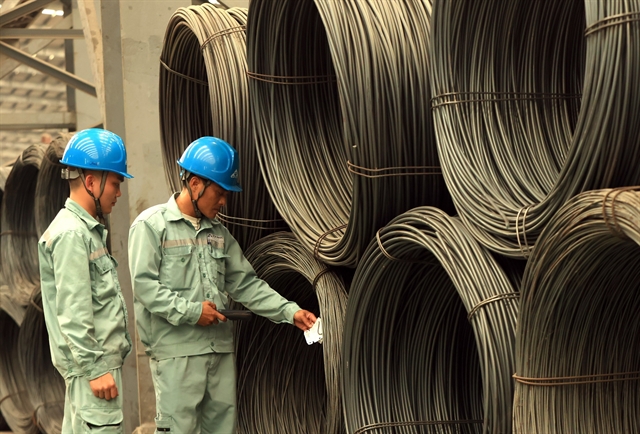 Economy
Economy

 |
| Technicians check rolled steel at the factory of the Việt Nam Steel Corporation (VNSTEEL). Iron and steel is a goods category subject to the UK's carbon border adjustment mechanism (CBAM). — VNA/VNS Photo Tuấn Anh |
HÀ NỘI — Vietnamese export businesses need to prepare for the United Kingdom’s carbon border adjustment mechanism (CBAM), which will take effect from 2027.
The reminder was issued by Hoàng Lê Hằng, first secretary of the Việt Nam's Trade Office in the UK, at a conference on how to be UK market ready, held in Hà Nội recently.
Exports from Việt Nam to the UK increased significantly since the implementation of the UK–Việt Nam Free Trade Agreement (UKVFTA). The UK is currently the third largest export market for Việt Nam.
“The UK government is conducting a legislative process to establish the carbon border adjustment mechanism, under which a carbon tax will be applied in the UK from 2027,” Hằng said. “Businesses will need to prepare a roadmap to comply with this mechanism.”
According to the Vietnam Chamber of Commerce and Industry (VCCI), the mechanism is designed to impose a fee on goods subject to import regulations into the UK, based on the level of greenhouse gas emissions during the production of those goods in the exporting country.
Although the specific list of goods, by the Harmonisation System (HS), has not been determined, the UK government has agreed to apply CBAM to seven categories, which are aluminium, cement, ceramics, fertiliser, glass, hydrogen, and iron and steel.
The exporters of goods subject to CBAM are responsible for paying the carbon tax, which will be determined for each imported batch based on its carbon emissions.
Compared to the European Union's CBAM, the UK’s CBAM does not apply to electrical products and does not involve the trading of carbon certificates.
Once the UK’s CBAM is applied, the scale and impact of this mechanism on Việt Nam’s exports will be significantly higher than that of the EU’s CBAM.
This is because Việt Nam does not export electricity to the EU or the UK, but does export large volumes of ceramics and glass products to the UK, especially those used in construction.
Regarding the forms of goods subject to CBAM, similar to the EU, the UK government defines that they can vary, as long as they are within the CBAM-regulated goods list. They can be finished products, raw materials, components, or energy, which is produced or processed for sale. — VNS